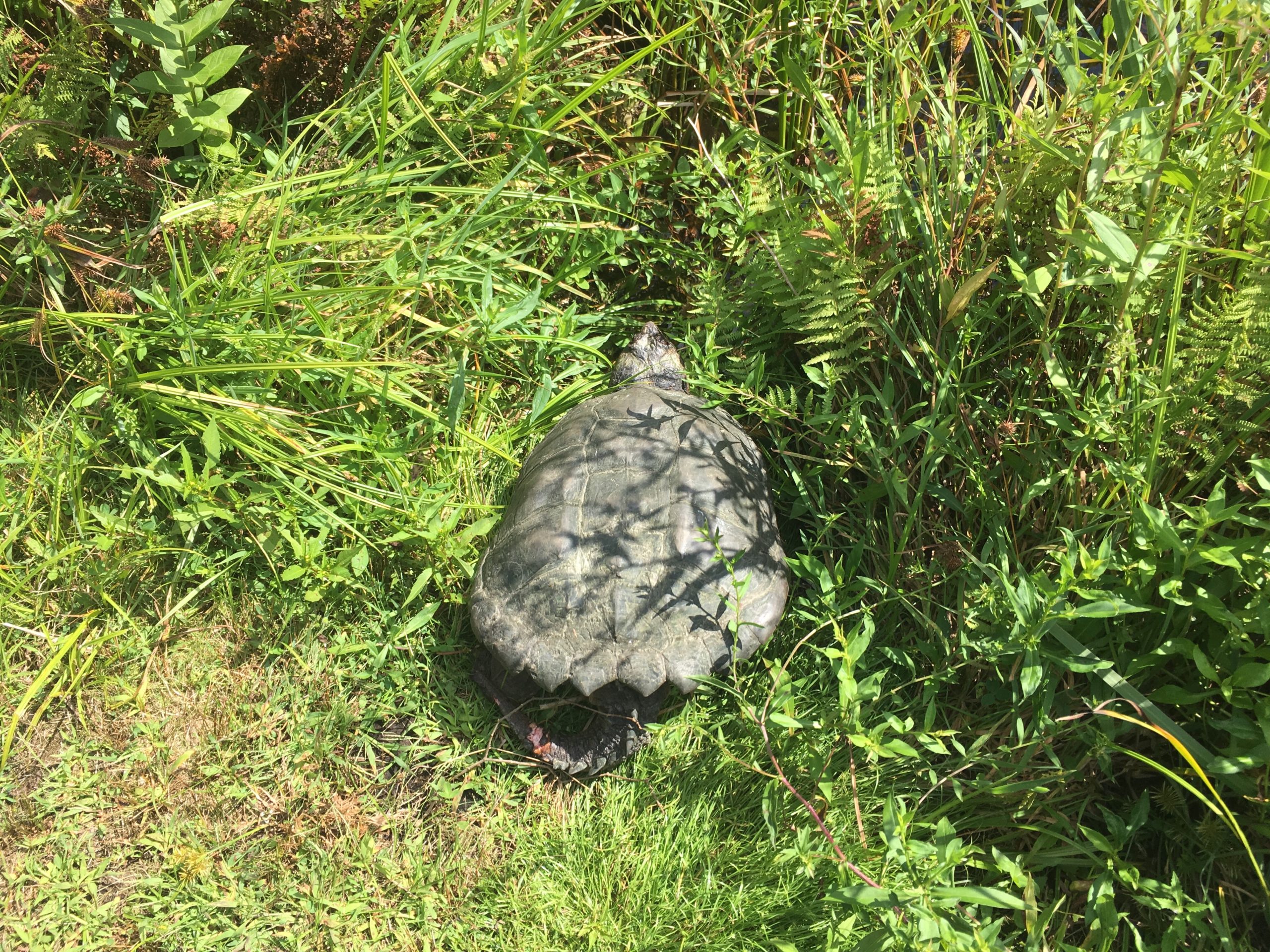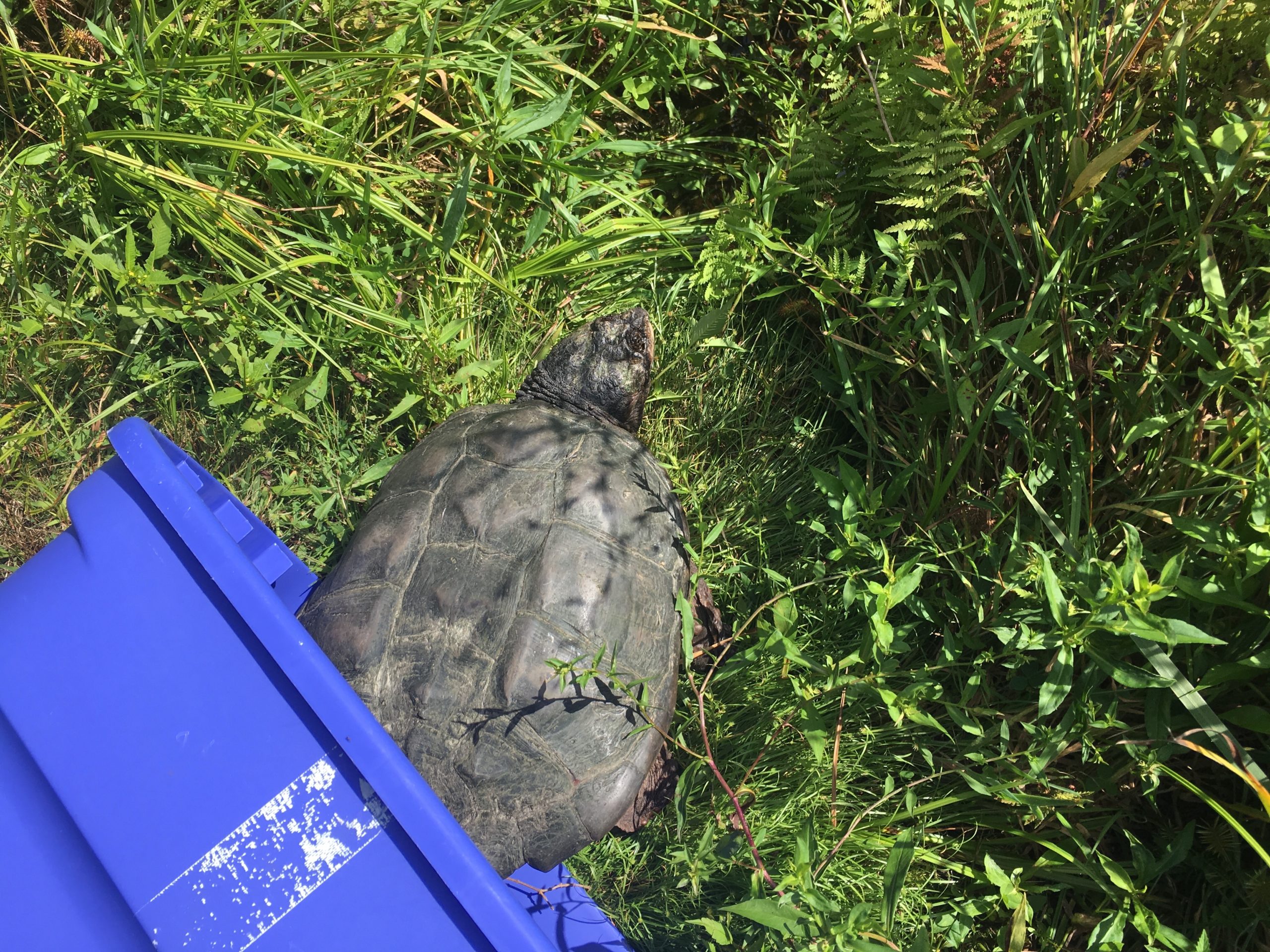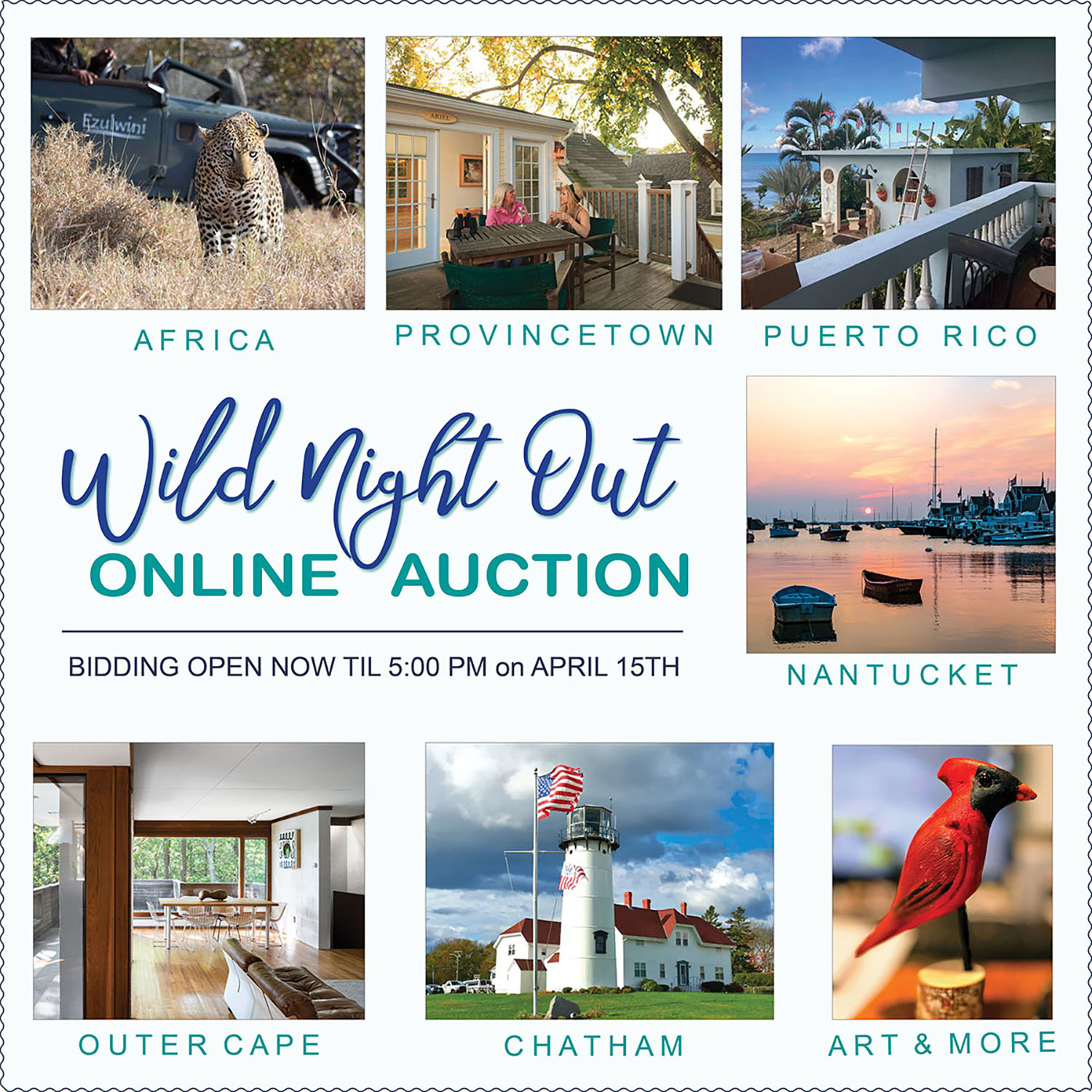
You Want Me to Check Out What??
Adventures of a Volunteer By Amy Sanders
Many calls that one receives as a volunteer field rescuer are easy. Well, not necessarily physically easy to carry out, but easy in that I know what to do. Once in a while though, a call comes through that is scary for me because I haven’t had the experience with it yet, or because it’s a big and potentially dangerous animal. In that category for me fall Swans, Canada Geese, Great Blue Herons, Egrets, and…Snapping Turtles. I didn’t lack experience with Snapping Turtles when the call came through to rescue one, I just lacked positive experiences with them. My first experience with one came long ago, when I was perhaps 20 and encountered one blocking a road in Wellfleet. It was a good foot across, and I knew not to touch.
So I tried to encourage it to move a bit faster with a nudge from my sneakered foot, hoping I could pass and it wouldn’t get hit by a car, but it swung around incredibly fast and took a chunk out of my sneaker (fortunately not my foot). Then, feeling a bit more humbled, I attempted a nudge with a large stick (easily an inch in diameter or more), which it promptly snapped. Turtle 2, me zero. I ended up just hanging out until it moved on its own.
My second was in my yard with a small but feisty three-legged dog who decided to “chase” it off her property. Afraid she’d quickly become a 2 legged dog, I moved her inside, and decided my visitor needed to be relocated to the other side of the swampy area that forms the north side of my property (it would go perhaps 100 yards away). This time, I knew better than to nudge it with feet or sticks. I got a Rubbermaid trash can, and a solid steel shovel, and urged it into the can with nudges from the shovel. Once in, and when back upright, I moved it to the other side of the swamp, and tipped it on its side for it to move out on his own.
And that was the extent of my experience–enough to know it was a very dangerous animal that could move much faster than it appeared, and could pack a powerful bite. Enough to know to leave it alone.
Until one day when this call came: “Can you check out a Snapping Turtle in North Truro? The caller is saying it’s stuck in his garden and might be injured.” Um, sure (anxiety!). I packed heavy gloves, a Rubbermaid container, my nerve, and headed out.
I arrived at a nice home, surprisingly far from any fresh water (more than 2 miles away). A Snapping Turtle is a water creature, and the homeowner and I found ourselves wondering how it got here (that is a mystery we would never solve). Sure enough, it was stuck between a lovely plant and the metal stake that held that plant, and the cement of the foundation. My first job was to get it out. By this time I had been advised by the rehabber on exactly where I could hold this animal, and reasonably expect to keep my hands. So I moved the stake (with permission), latched on to the turtle and lifted. It wasn’t happy but I was able to get it out onto the open lawn.
This animal reminded me of a stegosaurus. It was the largest Snapping Turtle I have ever seen by far, and it had bony plates on its tail. But its tail was injured. Following rehabber advice, I took a picture of the injury and texted it, and sat down to await her decision on what to do next. The turtle decided to use the wait time to get itself out of the sun and into the shade of a lilac bush, and then to turn and hiss.
It was the rehabber’s decision that this turtle would be better off being left alone. The wound was not deep and would heal, and the stress of being brought in, not to mention difficulty of providing adequate habitat space at Wild Care were not warranted in this level of injury. However, there was still the issue of how to get this turtle back to fresh water. We pondered and tossed around a few options, including completely leaving it alone to find its own way back, but ultimately we decided it needed a lift.
So, in a series of Twister-type moves, the homeowner and I extracted this beast from its secure lilac bush burrow. The homeowner provided the moves involving the bush, and I provided the moves involving contact with the turtle, remembering to be very careful about exactly where I could and could not hold it. After several minutes we had it out, and were able to encourage it to walk into the sideways Rubbermaid container by itself. Yay!
We slowly righted the container, popped it in the car, and drove a couple miles away to Pond Village. There we found a nice place to pull off the road, and a well grown-in area along the edge of Village Pond. I pulled out the container and gently rolled it onto its side. The previously very unhappy Snapping Turtle came out of that container in a surprisingly short amount of time, lifted itself up on its powerful legs and hauled for the water, where it disappeared in a flash. In a minute or two, we got a final glimpse as it surfaced, and then dove again. Two relieved and uninjured rescuers. One very happy Snapping Turtle!
–With great thanks to Jen, the rehabber on this one, and one very helpful homeowner.
Wild Night Out Online Auction
READY, SET, BID… We are so excited to announce that our Wild Night Out Online Auction is now live!
READ ALL NEWS
CALENDAR OF EVENTS
04 April, 2024
Wild Night Out Online Auction
EVENT DETAILS
05 April, 2024
Wild Night Out
EVENT DETAILS
28 February, 2024
Wildlife Winter/Spring Talk Series
EVENT DETAILS

DID YOU KNOW??
Wild Care has a state-of-the-art seabird therapy pool, which allows seabirds and waterfowl to exercise on running water. This will help our bird friends recover more quickly so they can get back to their watery habitats!

